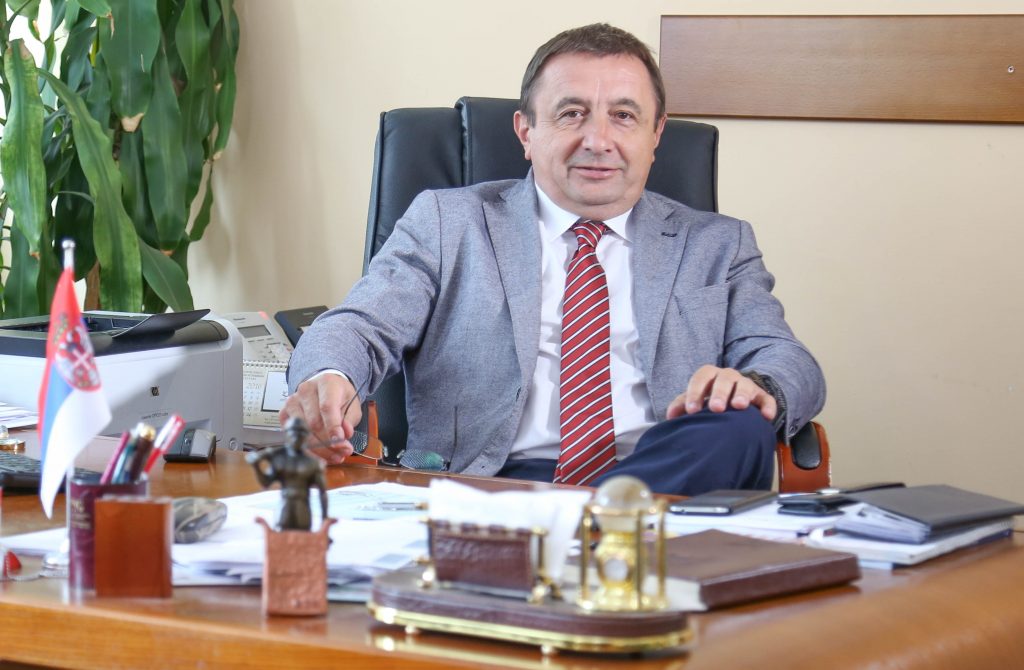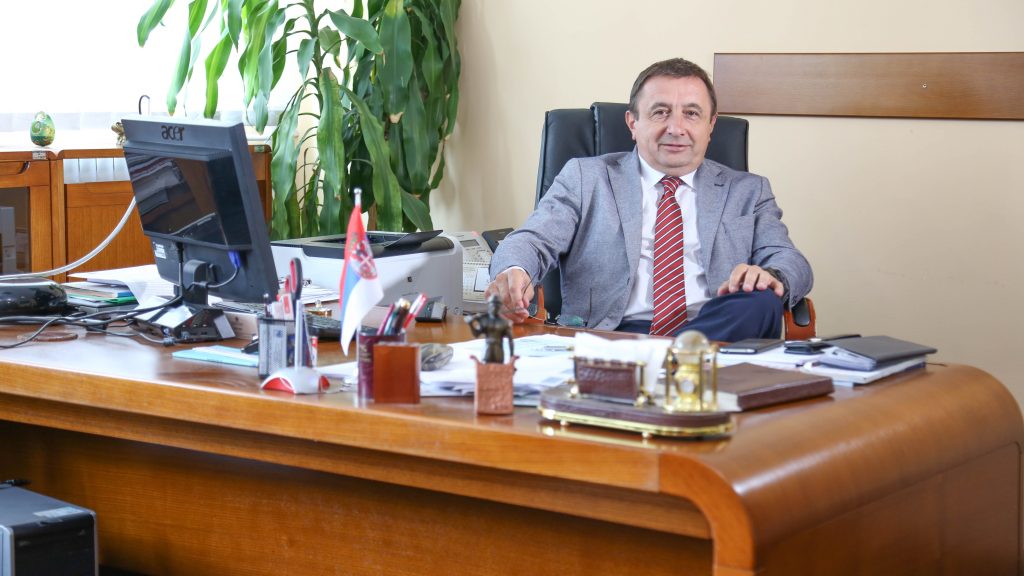The Institute has over 300 accredited methods applied in all laboratories and is a leader in this part of Europe in terms of the quality of equipment and work results
Serbia has great potential in energy, polymetallic ores, lithium and boron ores, non-metals, crude oil, etc. Mineral resources in Serbia have a great potential for sustainable economic development and boosting the national GDP as the main factor of the economic progress of the country.

The Institute of Mining and Metallurgy Bor (IRM Bor) was founded more than half a century ago. Could you tell us more about your services, resources and qualities?
IRM Bor is 100% state-owned, employs about 250 workers, of which 27 are doctors of sciences, 43 have a master’s degree and are pursuing doctoral studies, 80 are engineers of all technical professions, while the remaining employees are laboratory staff and technicians. As a scientific research institution, IRM has its own science and research & development, project and laboratory centres. The Institute offers to engineer and consulting services that cover all segments of mineral resources – metals, non-metals and coal – from geology, mining, metallurgy, and environmental protection to categorization of mining waste, remediation and reclamation of degraded areas.
It has the latest equipment for chemical testing of mineral raw materials – metal ores, alloys, precious metals, concentrates, coal, non-metals, water, soil, air, waste, the state-of-the-art software for modelling and design of all types of ore deposits, their optimization for surface and surface exploitation, processing of mineral raw materials landslide mass and modelling, laboratory for geomechanics and preparation of mineral raw materials, semi-industrial plants for ore flotation, hydrometallurgical processing of precious metals, plants for processing special precious metal alloys, non-ferrous metal alloys, and production of precious metal networks for reactors in nitrogen plants and laboratories.
Which projects are you especially proud of? Which were the most demanding?
The Institute closely follows global trends in technological and scientific development, and is at the top of technological development, shoulder-to-shoulder with the most developed companies in the world today which perform similar activities. This is the only institution in this part of Europe that provides at least 90% of engineering and consulting services and solutions in mining and metallurgy – from ore exploration, exploitation, processing and environmental protection to the processing of commercial semi-finished or finished products.
“In the last nine years, the Institute has invested a total of 12.5 million euro in laboratory equipment and design software, with all the money generating from the Institute’s work”
Today, IRM Bor has strong cooperation with scientific institutions in the country, the region, Europe and the world. It provides laboratory, project design and scientific services to numerous companies such as Zijin Copper and Zijin Mining, Kolubara, Kostolac, Eliksir, Pljevlja Mine, Gacko, Ugljevik, Metalfer, Metro Belgrade, Rudnik Brskovo, Šuplja Stijena, and others.
How did you manage to position the Institute on the market and to transform it into a very profitable institution considering how indebted it was?
After IRM separated from Smelting and Mining Basin Bor (RTB Bor) in 2007, due to the restructuring and preparation for the sale of RTB, it had huge debts and financial obligations, and it was only a step away from being liquidated. At that time, the Institute owed close to 7 million euro to creditors and in public liabilities. It also owed huge amounts of money towards covering interest rates that accrued because RTB Bor had not been settling its financial obligations, plus it owed five back salaries to its employees and decades-worth of payroll contributions of unrelated, as well as had very outdated technical equipment. Back then, the average salary at the Institute was equivalent to 250 euro and there were so many financial liabilities that we had to settle.
Thanks to the great effort, good management skills and hard work of all our employees, to the surprise of many, including us at IRM, we managed to transform the Institute into what it is today. Year-on-year, the Institute continued to develop and invest, both in equipment and staff, and that is a sure guarantee of sustainable development.

Many believe that mining creates a great opportunity for Serbia. What potentials does Serbia have and what else needs to be done for these potentials to be valorized?
Mining is one of the most important economic branches of Serbia and it creates a great opportunity for future development. Serbia has huge copper and gold potentials, which, considering today’s level of exploration of mineral resources, in the Bor district alone, are estimated to be worth about 200 billion USD at the current prices and with a lifetime of exploitation between 30 and 40 years. Today, the price of copper and gold is extraordinary and it enables progressive investments in sustainable development and growth of copper ore production.
Environmental protection is an absolute must in the production of mineral resources, and with the application of modern technologies and their disciplined management, sustainable production of mineral resources is not questioned because all legal standards will be met.